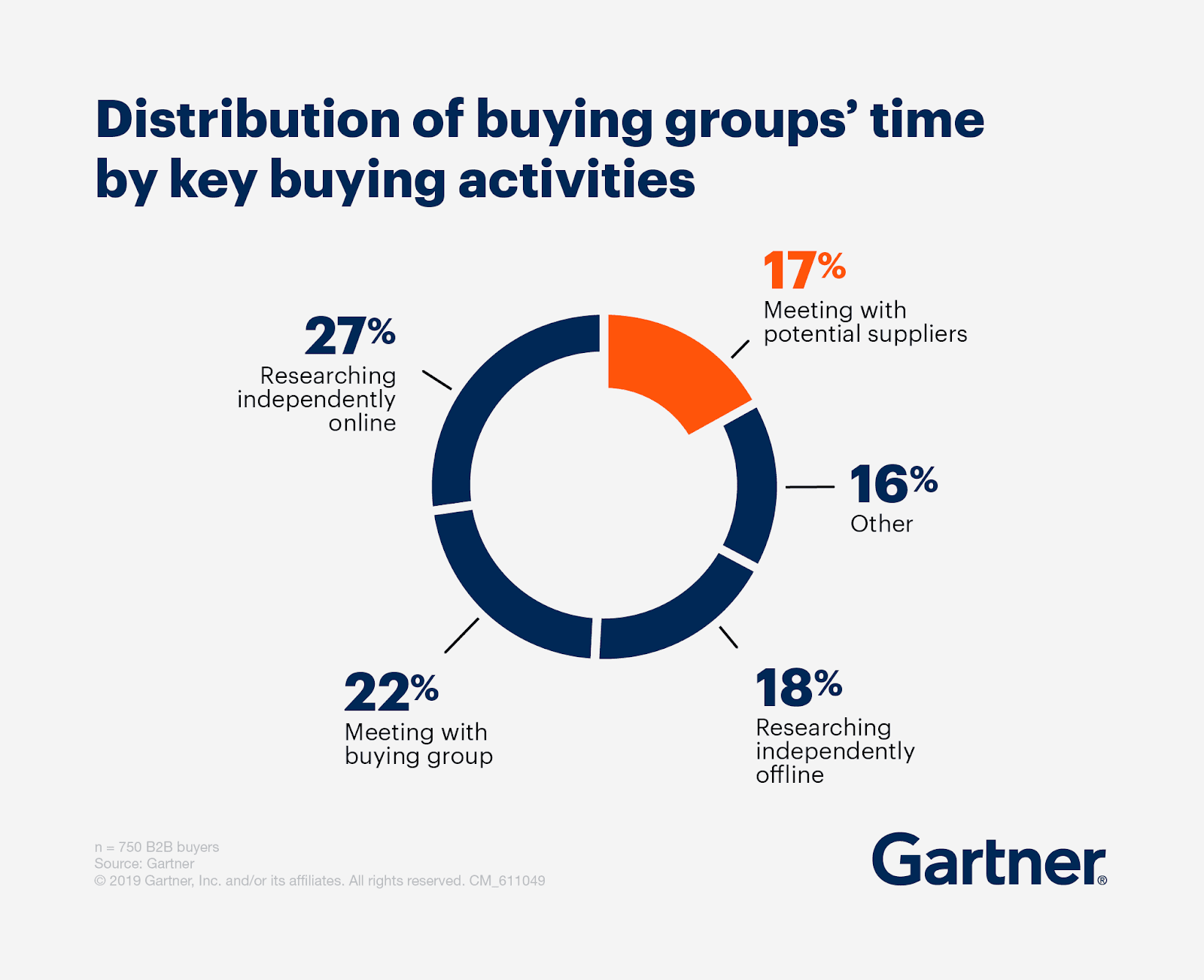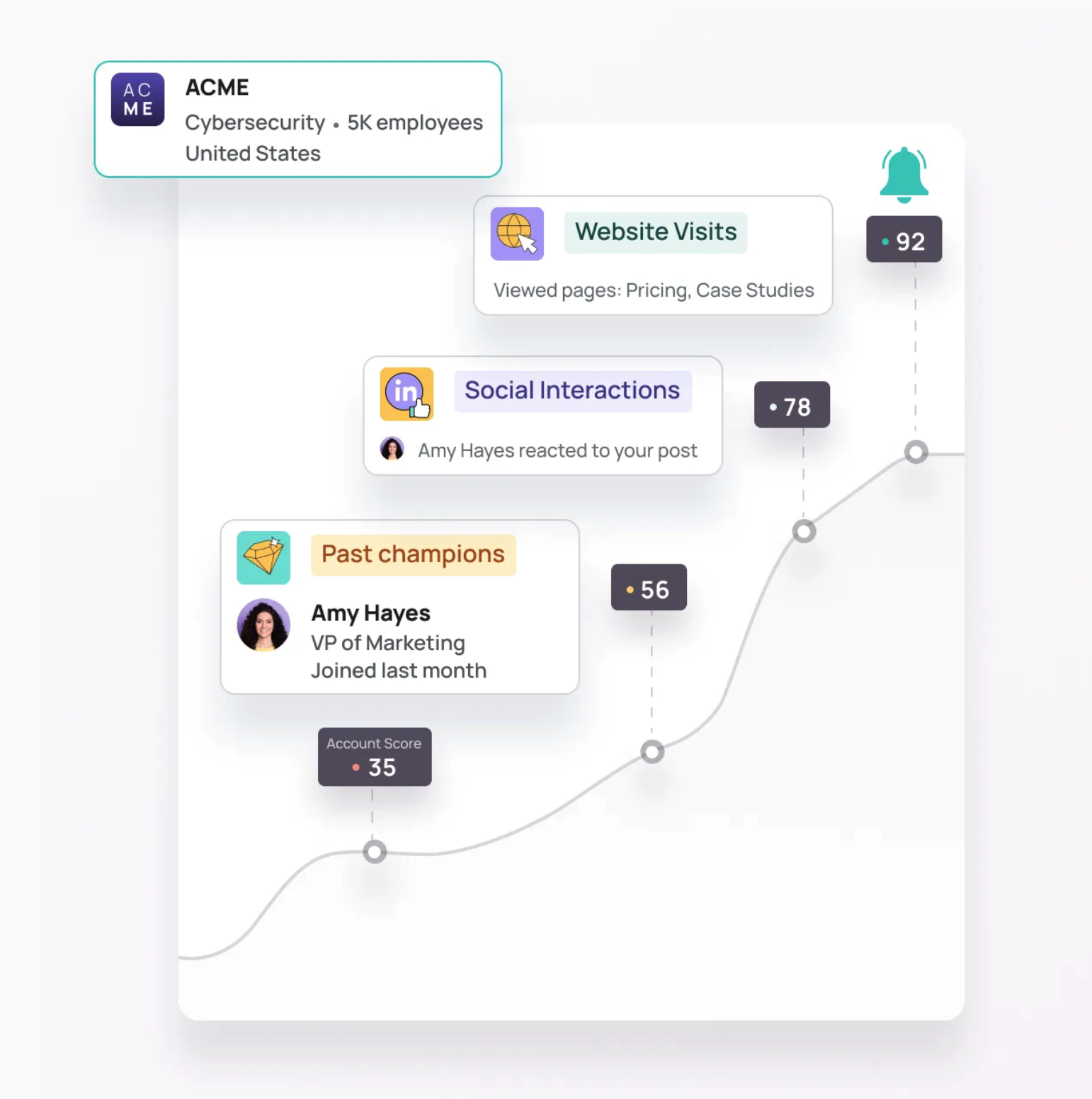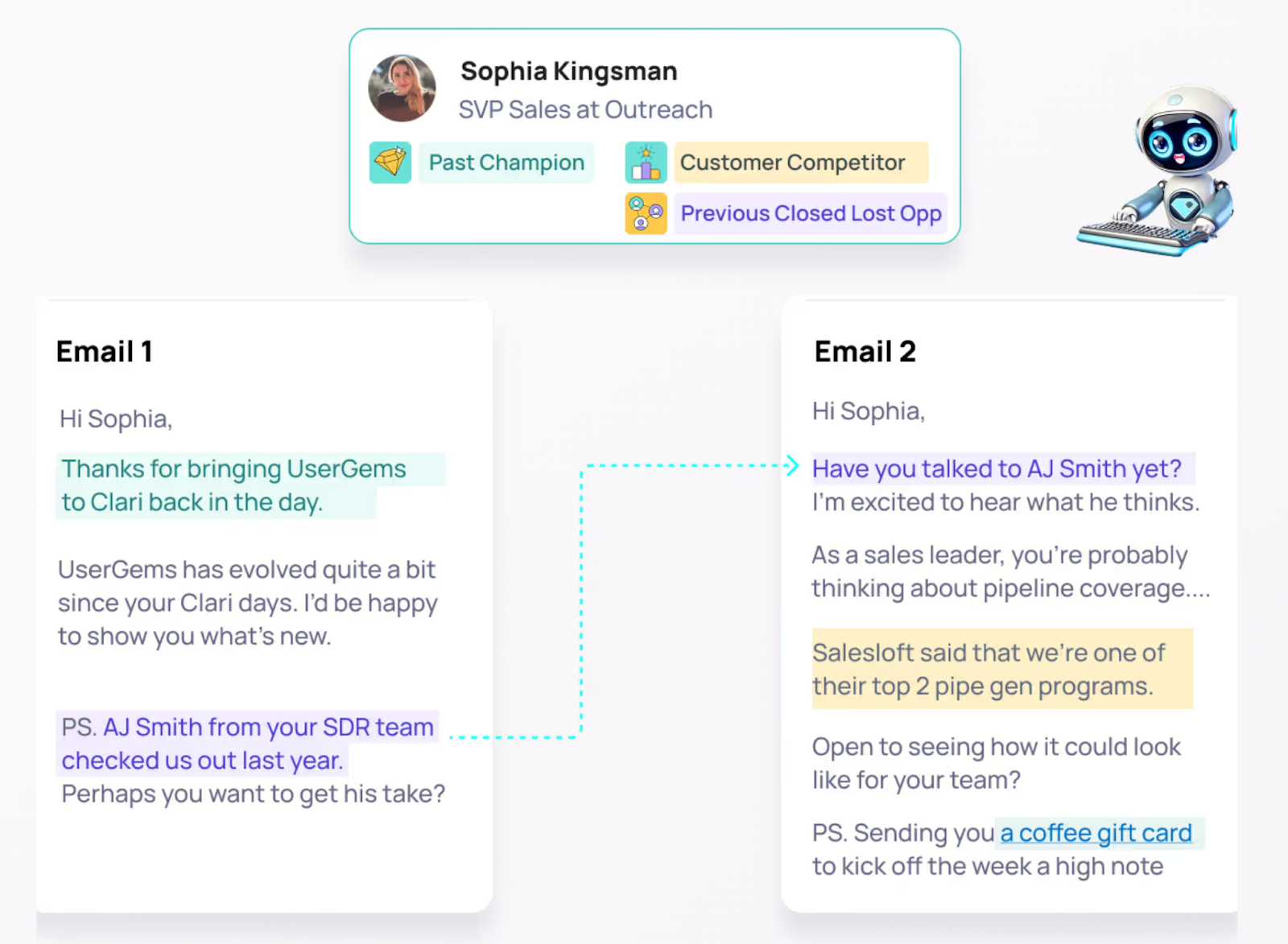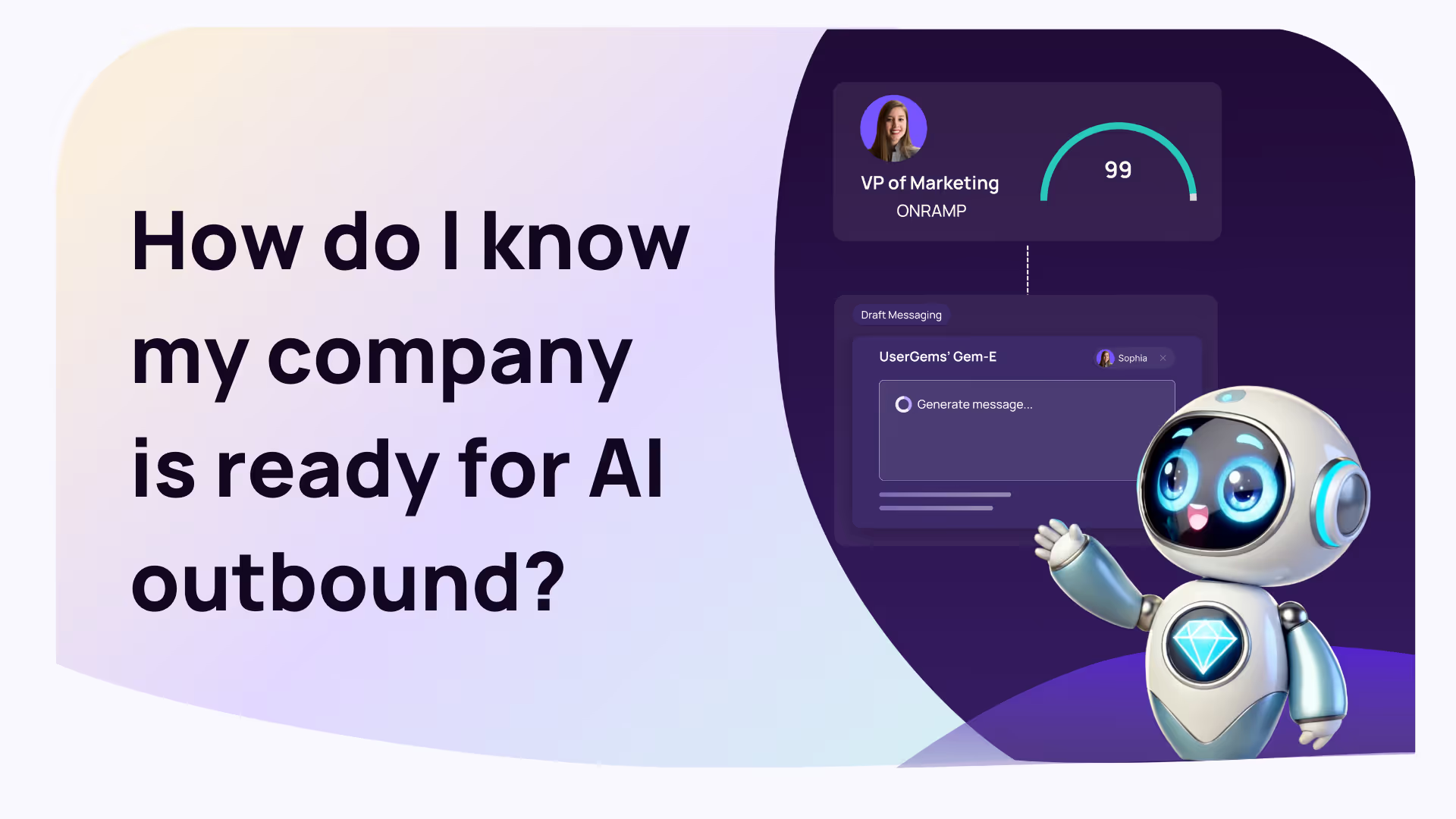
It’s not uncommon for qualified leads to go dark and stop responding to reps even after they seemed to show interest in your product.
While some lost leads will be impossible to convert because they genuinely weren’t interested in your product, there’s a chance that others just needed more time to consider your offer or it wasn’t a priority for them when you reached out.
Because of this, it’s important not to write off your lost lead pool entirely — it still has a lot of potential. We talked to some of the industry’s best and brightest to find out how they rekindle relationships with lost leads and how it can be even more beneficial than pursuing cold leads.
From segmenting lost leads to monitoring trigger events, here’s what they had to share.
What are lost leads in B2B sales?
A lost or dead lead is a prospect that no longer interacts with your sales reps or engages with the content you post on your website or social media platforms.
For example, they may have unsubscribed from your email list, stopped engaging with your social media posts, or read your messages without responding.
Lost leads shouldn’t be confused with cold leads. Where lost leads are prospects who initially engaged with your sales reps, cold leads are prospects who have never interacted with your business at all.
Many B2B companies don’t reconnect with lost leads in their sales process and prioritize cold leads instead because they think it’s unwise to waste sales and marketing efforts on prospects who ghosted them.
But in reality, it’s more beneficial for sales teams to revisit lost leads than to restart the sales cycle all over again to generate new leads.
Top reasons for losing leads
Before you can build a strategy to win back lost leads, you need to understand why they went dark. While it’s easy to assume they just weren’t interested, the reality is often more nuanced. In most B2B sales cycles, a lead goes quiet for reasons that have nothing to do with the quality of your product.
Here are some of the most common reasons qualified leads get lost:
- Their priorities don't align with your timing: This is the most common reason a good lead goes cold. They may be in the middle of a major project, focused on a hiring push, or simply don't have the bandwidth for a new evaluation. Your solution might be a priority for them next quarter, but it isn’t today.
- The path forward is unclear: B2B purchases are complex. Your champion might be interested, but they don't know how to navigate their internal buying committee, secure the budget, or get buy-in from other stakeholders. If the next steps are confusing, a deal can easily stall.
- Your message isn't resonating: Your sales rep might be focusing on features and benefits that don't align with the prospect's specific pain points. If a prospect can't see a clear and immediate path to a positive ROI for their specific situation, they will disengage.
- They aren't the right fit (and that's okay): Sometimes, a lost lead is a good thing. They may not fit your ideal customer profile (ICP), their company may be too small to get real value from your product, or they may lack the budget. Qualifying these leads out allows your team to focus its resources on accounts that are more likely to convert and be successful long-term.
Pro tip: Don’t assume a lead is lost forever just because their priorities have shifted. According to Gartner, B2B buyers spend only 17% of their time meeting with potential suppliers. The rest of their time is spent on independent research and internal meetings. This means a "no" today is often a "not right now." Dispositions like "Nurture - 6 months" or "Timing" in your CRM system can ensure these leads are revisited instead of forgotten.

Benefits of re-engaging lost leads for pipeline generation

Reaching out to leads who ghosted your sales reps may seem intimidating, but the benefits make it worth it. We talked to a ton of sales and revenue experts to learn:
- How they re-establish connections with lost leads
- How lost leads fit into their pipeline generation and lead management strategies
- Their best tips for using lost leads to scale revenue
From staying top of mind to increasing conversions rates, here’s what they think makes re-engaging lost leads essential to any lead generation strategy.
It allows you to stay top of the prospect’s mind
Not all high-quality B2B leads end up purchasing your product right away. Some might need to focus on other priorities or get approval for a budget increase before making a purchasing decision.
Instead of writing off your lost leads altogether, re-engaging them will allow your reps to stay top of the prospect’s mind until they’re ready to pull the trigger.
“The primary benefit of revisiting lost or dead leads is that it allows us to reconnect with those who have already expressed an interest in our products but have yet to make a purchase decision.
This helps us reconnect with prospective customers by providing them with more personalized content that is tailored to their specific needs or pain points”, says Lisa Dietrich, partner at girokonto.io.
David Bitton, co-founder and CMO of DoorLoop, adds to this: “You want to be there when they [your lost leads] are ready to proceed with their buying journey. If they forget about you and what you offer when they already need it, they’ll look elsewhere.
Furthermore, it’s a great way to tell leads that you didn’t forget about them and their needs despite not buying earlier.”
It helps improve customer service and loyalty
Revisiting lost leads provides reps with insights about:
- What made a prospect stop using your product or service
- How to re-establish your relationship with them
- And, how can you provide them with better and more personalized service
This improves customer experience and loyalty, according to Max Benz, Founder and CEO at BankingGeek.
“Additionally, it enables us to better understand how potential customers feel about our offerings so that we can further improve our product offering or adjust our marketing strategy accordingly.
Doing this increases the likelihood of converting prospects into long-term customers because they are given a better understanding of what we can do for them and why they should choose us over competitors,” says Max.
It increases revenue and conversion rates
Because of the current economic downturn, it can be hard for businesses to generate leads or create new demand. Add to that an unwillingness from buyers to interact with salespeople and pipeline generation can feel impossible.
But re-engaging lost leads is an effective and inexpensive way to increase conversion rates and revenue, as reps already have their information and an existing relationship.
“Revisiting lost leads can significantly reduce marketing costs as companies don't need to cast a wide net each time they're looking for potential new customers; they already have a pre-existing pool of customers who just need a bit of persuasion in order to become active buyers again,” says Robert Hoffman, Marketing Manager at Cashback Hero.
In short, lost leads positively impact your bottom line more than you think. But to convert them into customers, your reps need to know which strategies to use to get them back in the game.
3 essential strategies for re-engaging lost leads

It can be disheartening to lose leads and miss out on potential revenue and referrals, especially if the prospects initially showed a lot of interest in your product.
Thankfully, not all hope is lost. We collected some expert-backed strategies to help your reps rebuild relationships with lost leads and increase conversion rates to help you get started.
1. Segment your lost leads
Lead segmentation involves collecting lead information from your CRM and segmenting the data based on factors like a lead’s position in the sales funnel, demographics, company size, behavior, etc.
It enables reps to evaluate lost leads based on the ideal buyer persona to determine who is most likely to convert.
“By segmenting our target audience, we can identify which leads are more likely to be receptive towards our offers and outreach campaigns, which improves the likelihood of reviving a dead lead.
Additionally, this allows us to tailor our campaigns according to their needs which further encourages response from the customer,” says Robert.
Let’s say your software got a major upgrade that sales and revenue leaders can benefit from. With segmentation, you can filter prospects based on the number of activities they’ve completed to determine the ones more likely to convert into customers.
For example, you might want to prioritize a prospect who downloaded an ebook, signed up for your webinar, and registered to receive newsletters from you over someone who only completed a form fill.
Related reading → The complete guide to account-based marketing segmentation
2. Create email marketing campaigns
According to the Demand Generation Benchmark survey, email remained the top channel to drive leads into the pipeline, and for good reason.
Emails are the best way to provide value to the receiver; they can be hyper-personalized and used to start a conversation, ultimately building a long-term relationship with a prospect.
Plus, it’s easy to follow up with prospects using email automation tools. This is why most experts recommend using email along with other lead nurturing tactics like social media campaigns and webinars to rekindle your relationship with a lost lead.
David Bitton, Co-Founder and CMO at DoorLoop, says, “A tried and tested strategy we use to revive lost leads is email drip campaigns developed based on specific URL visits.
“This involves sending a series of short automated emails to specific audiences. We pinpoint leads who continue to visit our website, then send them personalized communication based on the landing pages they visit the most.
For instance, if the lead frequents our pricing page, we’ll send them emails focusing on why our pricing models make sense for them. We’ll also email them about our latest promos and offers.
Meanwhile, if a lead often views any of our portfolio pages, we’ll continue to stir their interest by telling them more about a specific benefit of our software in each email we send.”
David adds, “email drip campaigns are a great way to maintain recall because your email will show in your audience’s inbox several times, and you’ll be able to focus on one topic at a time, allowing the recipient to digest your message more effectively.
In short, you’re not overloading them with information. And when you create your messages based on the landing pages your audience visits more often, you can leverage the interest that they already have in your product or service. As you continue to feed your lead’s interest in every email sent, you take them a step closer to converting.”
Lisa Dietrich, Partner at girokonto.io, echoes the same sentiment. “At girokonto.io, we use targeted email campaigns as one of our primary strategies for revisiting and reviving lost or dead leads.
“We create segmented lists based on the interests of our prospects so that we can tailor our messaging to address specific pain points or offer solutions that are relevant to their needs.”
Lisa continues, “This helps us engage with people who may have shown an initial interest in our products but haven’t yet converted into customers.”
Email templates reps can use to restart conversations with lost leads
There’s no one-size fits all approach when it comes to re-engaging lost leads. However, we’ve included a few email templates below that experts use to reconnect with prospects who ghosted them.
- Resource recommendations. Reach out to prospects with case studies, webinars, or industry research to re-establish trust and position yourself as a helpful resource. [Abhishek Shah, the founder of Testlify]

- Smart solutions. Provide the prospect with a solution to a problem they’re facing. [Kenny Powell, Sr. ADR at UserGems]

- Feature focus. Create a personalized email using the following template to revive the relationship with a dead lead whenever they make product improvements that cater to a prospect’s specific need. [Alwin Wei, the CMO and Head of Strategy at SEOAnt]

3. Monitor trigger events
Trigger events are significant changes that create openings for reps to reach out to or reconnect with prospects and sell to them. For example, a company expansion, a new product or service announcement, or even a prospect's job change.
Given that prospects and customers change jobs more often than they did in the past, your reps should track job changes because it helps them to prevent prospects from turning into lost leads when they move to a different company.
Ellie von Reyn, Conductor’s Director of Demand Generation faced this exact dilemma. She knew she had to track customer job changes. But her team looked for past contacts on LinkedIn or reached out to lost leads one at a time, which was time-consuming and sometimes unreliable.
That’s when she began searching for tools that would automate the process and found a solution.
“We found UserGems, a sales intelligence tool that essentially does the heavy lifting for us,” said von Reyn in a MarTech article. “The technology identifies when contacts from our existing customers move to a new company. We’re now able to automate email campaigns that get in front of previous users — we call them our past-user campaigns,” she said.
Once Ellie’s team made UserGems a part of their tech stack, training was a breeze because of how intuitive it was. Plus, UserGems pulls information from popular CRMs (like HubSpot and Salesforce).
Whenever a contact switched jobs, Conductor’s reps received an automated alert, allowing them to reach out using an automated email sequence congratulating them on their new role.
Additional tips for reconnecting with lost leads
Once you have your core strategies for segmenting, emailing, and monitoring trigger events in place, you can layer on additional tactics to stay top-of-mind and provide value. Here are four more expert-backed ways to rekindle relationships with your lost leads.
Retarget them on other channels
Don’t limit your re-engagement efforts to just email. Once you've identified a segment of high-value lost leads, use that same list to run targeted ad campaigns on platforms like LinkedIn. This "air cover" approach keeps your brand visible in a different context. When your next email does land in their inbox, it won't feel cold because they've already seen your content or case studies in their social feed.
Offer a compelling, time-bound incentive
This tactic should be used sparingly and reserved for high-fit leads who you believe are close to a decision. A compelling, time-bound offer can create the urgency needed to get a deal back on track. This doesn't have to be a discount; it could be a limited-time offer for a free, in-depth consultation, access to a premium workshop, or a free trial of a new feature. The key is to provide a clear reason for them to act now.
Be a helpful, educational resource
Shift your mindset from selling to helping. Consistently provide value that helps your lost leads do their jobs better, whether they buy from you or not. Share relevant industry research, offer templates that solve a common problem, or invite them to webinars with other thought leaders. By positioning yourself as a trusted advisor, you ensure that when their priorities shift and they are ready to buy, you're the first person they call.
Ask for feedback via survey
Sometimes the best way to restart a conversation is to stop selling and start listening.
Sending out surveys to lost leads is the best way to reconnect with them and acquire important insights about them, according to Max Benz, Founder and CEO at BankingGeek.
“Sending out surveys helps us stay connected with customers who may have gone inactive or stopped using our services altogether. By asking customers questions about their experience with us, we’re able to better understand what they want and how we can better serve them in the future,” says Max.
For instance, if a good amount of lost leads cite the lack of a specific feature or functionality (like the inability to track customer job changes) as the reason they dropped out, it might be worth exploring. If you do decide to develop that feature in the future, you can reach out to them with a personalized email to announce its release and let them know how it can benefit their organization.
The automated engine for reviving lost leads
The biggest challenge with lost leads isn't a lack of interest—it's a lack of insight. A lead goes dark for a reason, and they re-engage for a reason. Manually tracking those reasons across thousands of dormant contacts is impossible. That's why top revenue teams use an intelligent system to monitor for opportunities automatically.
UserGems transforms your "lost leads" list from a static graveyard into a dynamic source of warm pipeline. Here's how our platform does the heavy lifting for you:
It all starts with real-time buying signals
Our platform plugs into your CRM and continuously monitors your entire list of lost leads for key trigger events. Instead of guessing when to follow up, you get an automated alert when a real opportunity appears. These signals include:
- Job changes: We alert you the moment a past champion or key prospect starts a new role at one of your target accounts.
- New executive hires: You'll know when a new decision-maker joins a lost account, giving you a fresh reason to re-engage.
- Website intent: See when someone from a lost account visits high-value pages on your website, like pricing or case studies.
- Funding announcements: Get notified when a company gets a new round of funding, often indicating a refreshed budget and new priorities.
And 500+ more.

Gem-E, your AI SDR, crafts the outreach
Knowing the right time to reach out is only half the battle. You also need the right message. Our AI agent, Gem-E, combines the buying signal with the historical context from your CRM (like the original "reason for loss") to draft a hyper-relevant outreach email for your reps. This eliminates writer's block and ensures every follow-up is personalized and contextual, not generic.

Automated workflows ensure no opportunity is missed
Using simple, powerful workflows, you can define exactly what happens when a signal is detected and streamline the entire play. For example: "WHEN a contact from our 'Closed-Lost Q1' list starts a new job at an ICP account, THEN enroll them in our 'Past Champion' sequence and automatically assign a task to the account owner." This guarantees speed and ensures no warm opportunity ever slips through the cracks.
The best part? We back it with a guarantee. If you don't generate pipeline that covers your UserGems investment, we'll refund your money.
Stop letting your best leads go cold. Book a demo today and find out how many of your "lost" opportunities are ready to be re-engaged right now.
FAQs
When do you need to re-engage lost leads?
The best time to re-engage is not based on a random 90-day timer, but on a meaningful trigger event. Reaching out when there is a specific reason makes your outreach relevant and welcome, not random. The ideal time to connect is when a lost lead's account shows a new buying signal, such as:
- A past champion or user starts a new job at the company.
- They hire a new executive in a key decision-making role.
- They receive a new round of funding, indicating a budget refresh.
- Someone from their company visits a high-intent page on your website, like pricing.
Should I treat all lost leads the same?
No, segmentation is crucial. You should prioritize your re-engagement efforts based on why the lead was lost and how well they fit your ideal customer profile (ICP). For example, a high-fit lead who was lost due to bad timing is a top-tier candidate for a personalized re-engagement campaign. A lower-fit lead who was lost due to budget might be better suited for a long-term, automated nurture sequence.
What’s the best way to reach out without seeming pushy?
The key is to lead with value and context, not a sales pitch. Always reference the trigger event as the reason for your outreach. Instead of "just checking in," your message becomes, "Congrats on the new role!" or "I saw your company just announced its Series B, which is exciting." Focus the conversation on them and their new situation. Offer a helpful resource or insight, and don't ask for a meeting in the first email. The goal is to restart the relationship, not force a demo.
How do you measure the success of a lost lead campaign?
Success should be measured by its impact on pipeline and revenue. Tracking these KPIs allows you to continuously optimize your re-engagement efforts. The key metrics to track are:
- Re-engagement rate: The percentage of lost leads who reply to your outreach.
- Pipeline contribution: The total value of new, qualified opportunities generated from revived leads.
- Conversion rate: The percentage of re-engaged opportunities that become closed-won deals.
- Sales cycle length: Compare the sales cycle of a revived lead to that of a new, cold lead. Often, revived leads will close faster.




